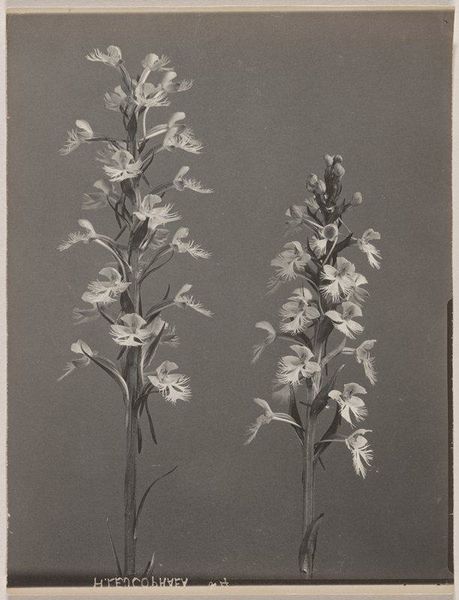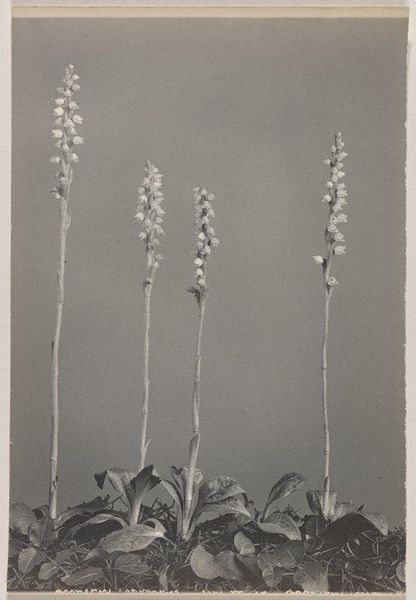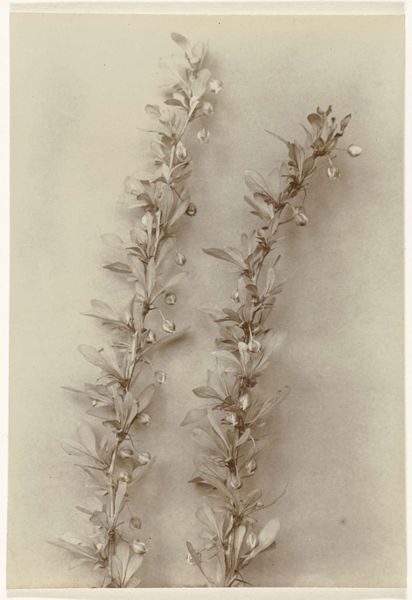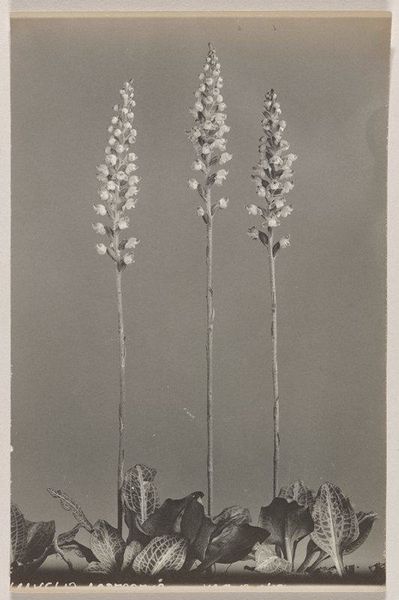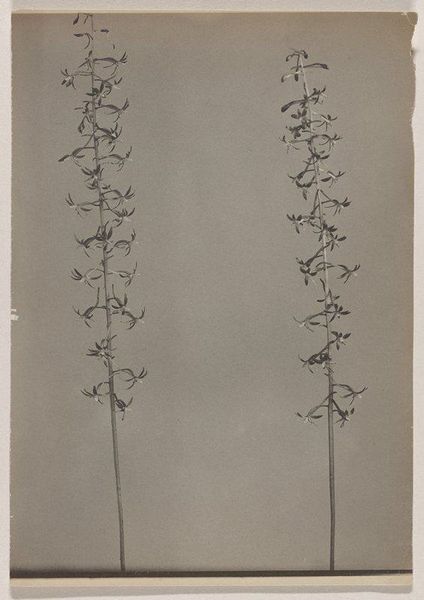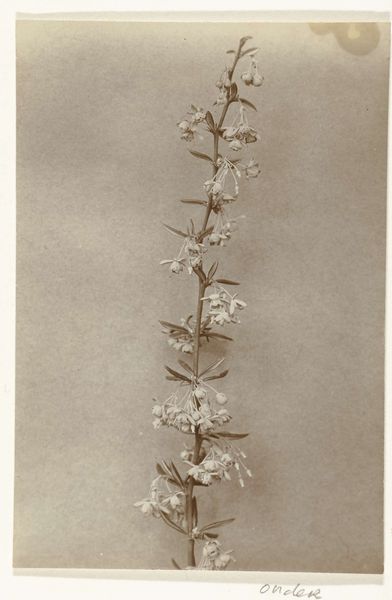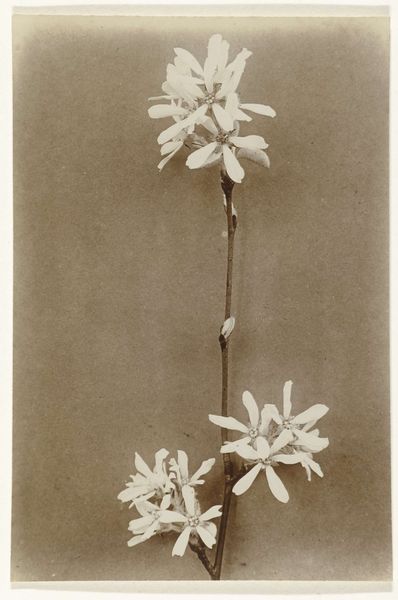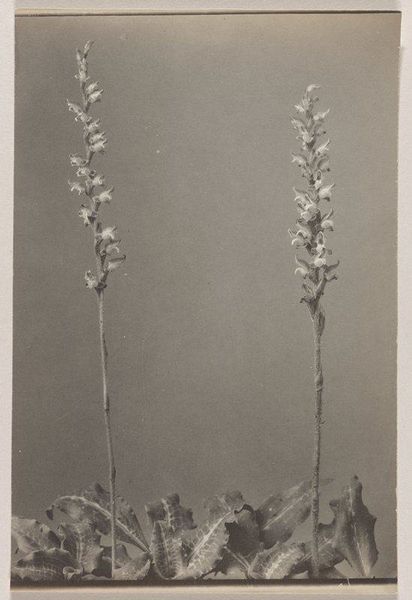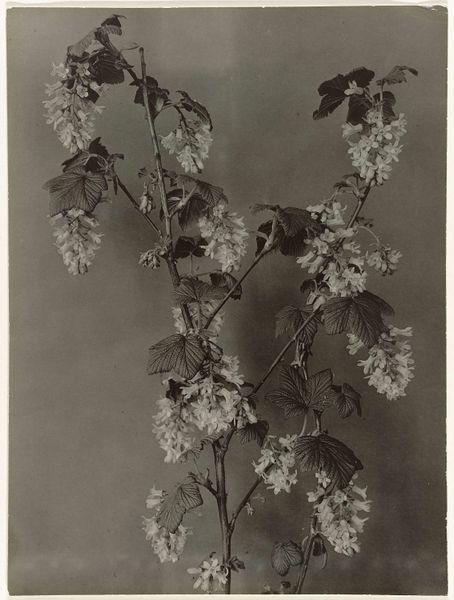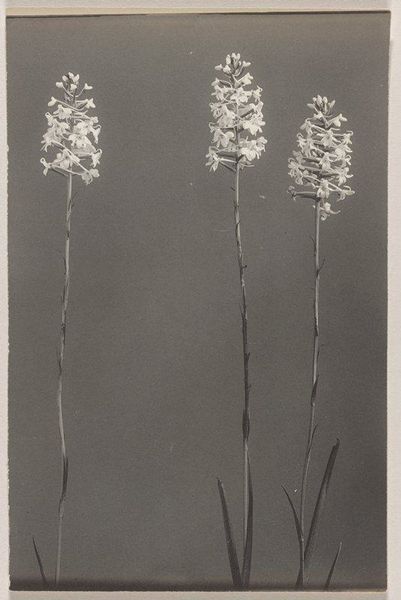
Habenaria macrophylla- Large Round-leaved Orchid 1931
0:00
0:00
print, photography, gelatin-silver-print
#
still-life-photography
#
toned paper
#
ink paper printed
# print
#
landscape
#
photography
#
linocut print
#
gelatin-silver-print
#
united-states
#
botanical art
#
watercolor
#
realism
Dimensions: 9 5/8 x 7 5/8 in. (24.45 x 19.37 cm) (image)9 15/16 x 7 3/4 in. (25.24 x 19.69 cm) (sheet)
Copyright: No Copyright - United States
Curator: The quiet tonality gives this print an incredibly serene mood, almost ghostly. Editor: We're looking at Edwin Hale Lincoln's "Habenaria macrophylla- Large Round-leaved Orchid," a gelatin-silver print created in 1931. Currently, it resides here at the Minneapolis Institute of Art. Curator: The choice of the gelatin-silver process is quite interesting here. It speaks to a precision and control—evident in the way he captures every minute detail of these orchids. Think about the chemistry involved; Lincoln's choice emphasizes a sort of industrial elegance, almost at odds with the organic nature of the subject itself. It merges science and the delicate beauty of plant life, doesn't it? Editor: It does indeed. I’m drawn to the stark contrast and the repetitive yet delicate form of the orchids. Orchids often symbolize love, beauty, refinement. Do you think the paired presentation emphasizes the duality of those qualities, perhaps mirroring ideal and reality? The variation between the two specimens is striking; one much more dense in its blooms, implying abundance or maybe even untamed growth. Curator: I'm interested in how printing such detail makes the floral structure feel almost like a manufactured product, or a kind of precision instrument from an era preoccupied with industrial advancement. This was the 1930s, a period wrestling with production capabilities and the place of labor. Perhaps Lincoln's choices nod toward anxieties concerning mechanization overtaking nature? Editor: Possibly. The choice of presenting the plants as a pair certainly adds another layer. Is it simply about botanical classification, or is he exploring ideas about partnerships or interconnectedness? I see a kind of austere beauty, emphasized through its monochrome rendition and clinical framing. He captures a sense of fragile yet resilient beauty. Curator: Seeing them together definitely reframes my perception. I find myself thinking about cultivation, botany, and even the marketplace surrounding orchids – their use in society. Lincoln is providing an artifact, meticulously documented, accessible for trade, or study. Editor: Considering the symbolic meaning attached to the floral form combined with the exacting medium and style...It seems like a bridge between nature and idealized representation of it. Fascinating piece. Curator: Yes, it provides much to contemplate considering industrial society, photographic process and of course our connection to the natural world.
Comments
No comments
Be the first to comment and join the conversation on the ultimate creative platform.
